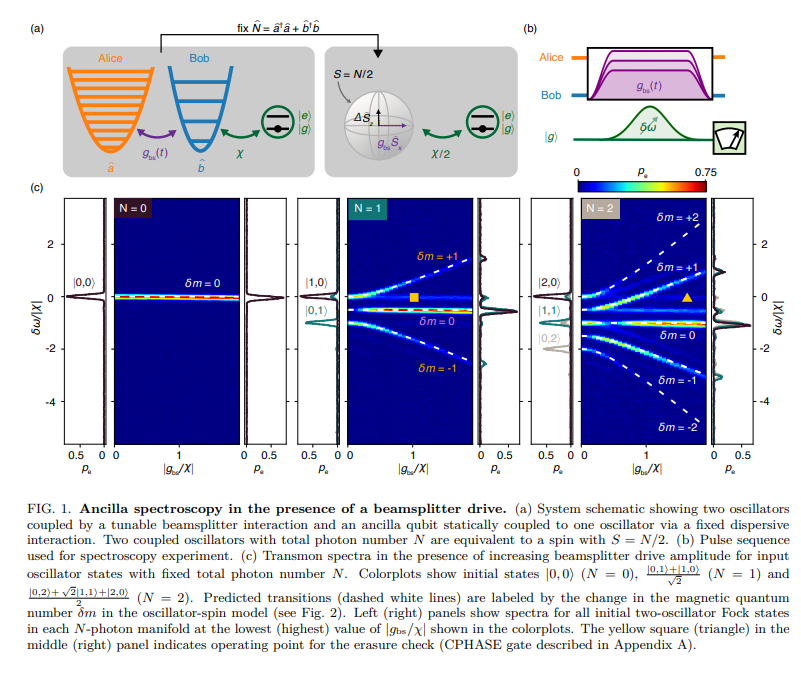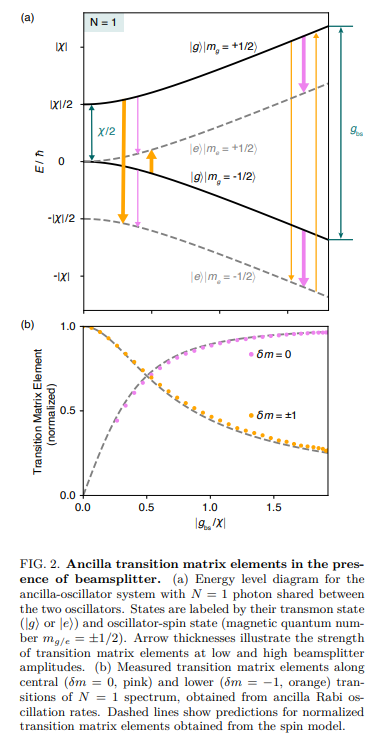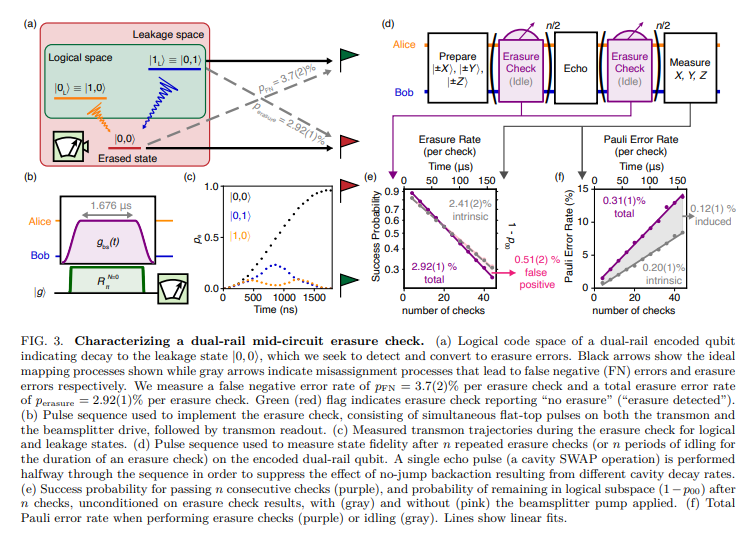A mid-circuit erasure check on a dual-rail cavity qubit using the joint-photon number-splitting regime of circuit QED
2024-06-20 09:43
976 浏览
Quantum control of a linear oscillator using a static dispersive coupling to a nonlinear ancilla
underpins a wide variety of experiments in circuit QED. Extending this control to more than one
oscillator while minimizing the required connectivity to the ancilla would enable hardware-efficient
multi-mode entanglement and measurements. We show that the spectrum of an ancilla statically
coupled to a single mode can be made to depend on the joint photon number in two modes by
applying a strong parametric beamsplitter coupling between them. This ‘joint-photon numbersplitting’ regime extends single-oscillator techniques to two-oscillator control, which we use to realize
a hardware-efficient erasure check for a dual-rail qubit encoded in two superconducting cavities. By
leveraging the beamsplitter coupling already required for single-qubit gates, this scheme permits
minimal connectivity between circuit elements. Furthermore, the flexibility to choose the pulse
shape allows us to limit the susceptibility to different error channels. We use this scheme to detect
leakage errors with a missed erasure fraction of (9.0±0.5)×10−4
, while incurring an erasure rate of
2.92 ± 0.01% and a Pauli error rate of 0.31 ± 0.01%, both of which are dominated by cavity errors.






Article: https://arxiv.org/abs/2406.14621
